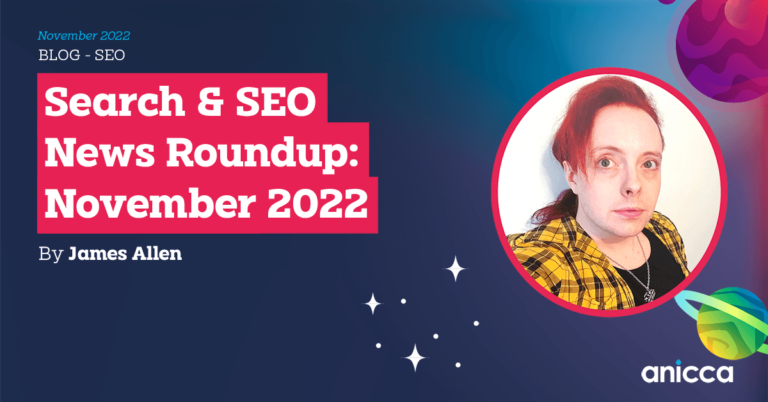AI Unleashed: Unravelling the Creative Impact of Generative AI

This blog delves into the fascinating world of Generative AI and its significant impact on the creative industry. We explore the origins of Generative AI, its recent prominence, and the reasons driving its increasing adoption. As we examine the appeal of Generative AI, we also discuss the inherent limitations and ethical concerns surrounding its use, emphasising the importance of human creativity in maintaining the delicate balance between AI-generated content and emotional storytelling.
Join us as we uncover how Generative AI, especially GPT-4 based models, can revolutionise the creative process by offering unique perspectives, assisting with research, and enabling rapid content generation. We’ll also share practical examples of how we’ve integrated Generative AI into our creative workflow at Anicca and address the potential risks and challenges associated with public-facing applications of this powerful technology.
Finally, we’ll ponder the future of the creative industry as Generative AI continues to evolve and become more sophisticated, ultimately exploring how we can harness its potential whilst preserving the essence of human creativity. So, sit back, relax, and get ready to embark on an enlightening journey into the world of Generative AI and its transformative effects on creativity.
Key Takeaways:
- In recent years, generative AI has emerged as a significant disruptor to the creative industry, enabling users to generate original copy and imagery in seconds using only a series of simple commands.
- Generative AI tools offer simplicity and efficiency, but they need an understanding of context and nuance, potentially resulting in aesthetically pleasing yet meaningless content, raising concerns about deep fakes and digital trust.
- Despite its limitations, Generative AI offers a new perspective and assistance for the creative industry, and it can be used for alternative perspectives, research, assistance, and summarisation.
- At Anicca, we use Generative AI throughout our creative process to articulate concepts and ideas more effectively to clients, save time, and improve the final output.
- The advent of GPT-4 heralds a new era for generative AI, showcasing the latest progress in the field and opening up novel possibilities within the creative industry. However, it’s essential to approach public-facing applications of Generative AI with a keen awareness of its limitations and potential pitfalls.
What is Generative AI, and why is it significant?
Unquestionably, Generative AI has emerged as one of the most substantial disruptors to the creative industry in recent years. It cannot be disregarded without the risk of being left behind. With the advancements and introduction of numerous platforms, such as GPT-4 based AI models, in recent months, users can now generate original copy and imagery in a matter of seconds using only a series of simple commands. Ranging from inventive long-form content to intricately detailed photorealistic images, the capabilities of AI platforms have made a remarkable entry. However, as is the case with any disruption, it inevitably leads to new opportunities, challenges, and potential conflicts.

Generated by Midjourney AI engine: Prompt: a header image for a blog based on generative ai where we discuss how AI is a brilliant accompaniment to creative services –are 16:9.
What is the origin of Generative AI, and why has it gained prominence?
Last year, the spotlight was on Web3, the foundation for the decentralised Internet where cryptocurrency and the world of NFTs reside. While Web3 experienced a remarkable boom and bust, Generative AI, like ChatGPT-4, is expected to have more excellent stability. The critical difference is that Web3 never claimed to save time on tasks, whereas Generative AI aims to do just that. As the saying goes, time is money, and any technology that enhances efficiency across industries should not be underestimated.
Is Generative AI truly a novel concept? In a nutshell, no; it has been around for approximately 60 years, with chatbots marking its inception. However, it was not until 2014, with the advent of generative adversarial networks (GANs) – a type of machine learning algorithm – that Generative AI could produce convincingly authentic images, videos, and audio featuring real people. Investments by tech companies have facilitated its accessibility through more user-friendly interfaces, which accounts for the recent surge in interest.
What drives the need for Generative AI? The answer lies in our insatiable appetite for information and content. We consume content at an unprecedented rate, and platforms like TikTok, with their demand for intelligent, instant captions/subtitles and face filters, exemplify this trend. However, concerns about deep fakes and digital trust remain prevalent. While the technical details of how these engines work may not be crucial for this discussion, it is worth noting that the advancements in large language models (LLMs), such as GPT-4, with billions or even trillions of parameters, have ushered in a new era where generative AI models can create text, essays, images, videos, and audio based on just a few prompts. This breakthrough is the core reason behind the excitement surrounding Generative AI today.
What makes Generative AI so appealing?
The allure of Generative AI primarily lies in its simplicity. With a mere text prompt, users receive multiple options to select from. The creative industry has not witnessed such ease since the rise of computer graphics in the 1980s and 1990s. Nowadays, few outputs haven’t been influenced by the Adobe suite – Photoshop, Illustrator, After Effects, and InDesign has shaped most advertisements and images. Jurassic Park, which began production in 1993 with stop-motion dinosaur scenes, integrated CGI during its production (see this story here). Before the Pixar era, Disney relied on hand-drawn animation, with The Little Mermaid (1989) marking their final hand-drawn feature, and the ballroom scene in Beauty and the Beast (1991) debuting their first CGI scene (watch the scene here).

The last hand-drawn Disney Film before the introduction of computer graphics, The Little Mermaid 1989 (image rights Disney ©)
Technological advancements often evoke reluctance, particularly in the initial stages when the technology could be more robust and robust. Established industries become apprehensive, and job security is threatened by automation. Generative AI, however, feels distinct. While its output is undeniably impressive, these systems lack an understanding of context and nuance, potentially resulting in aesthetically pleasing yet meaningless content. There are also significant risks concerning trademarks and intellectual property; these engines may inadvertently incorporate brand references or human likenesses that could land creatives in legal trouble. Additionally, concerns about bias, including gender equality, persist. Dr Joy Buolamwini has extensively researched these issues, which you can read more about here.
Consequently, creatives should only partially relinquish control to Generative AI systems like ChatGPT-4. Instead, we should utilise these tools for alternative perspectives, research, assistance, and summarisation. By familiarising ourselves with Generative AI today, we can better prepare for significant future transformations within the industry.
Where can you try Generative AI for yourself?
The creative industry is particularly interested in image-generation tools, and several options are available. DALL-E2, Stable Diffusion, and my personal favourite, Midjourney. Additionally, there are creative text and content tools like ChatGPT-4, which have gained significant attention. And, since we live in a video-centric world, it’s no surprise that video-based generative AI tools such as D-ID and Synthesia have emerged.
After experimenting with these tools, you’ll discover they can generate fun, novel, and sometimes impressive outputs. However, they may become repetitive and predictable, making you feel frustrated as you search for the right keywords to make the engine comprehend your intentions better. Some platforms, like Midjourney, employ a chat view where users queue for their prompts to be generated, revealing how similar their images are to those of others. Furthermore, upon closer inspection of the outputs, you might notice peculiarities, such as six-fingered hands or distorted forms, as aspects like fingers and hands can be challenging for the engine to generate accurately.

Generated by Midjourney AI engine: Prompt: Everyday photograph, friends enjoying a drink in a pub in London, hyper-realistic, Photoreal, original, polaroid. –ar 3:4.
Should we take Generative AI seriously?
Despite the aforementioned limitations, it’s crucial to recognise that we’re still in the early stages of generative AI, and the robust, coherent responses we receive are impressive. History has shown us that dismissing such advancements can be unwise. Imagine telling an illustrator 30 years ago that Disney would solely produce computer-generated movies – they’d probably laugh you out of their studio. Yet, that’s precisely what happened. Disney no longer creates 2D animated films because 3D computer-generated animations save time and money, allowing for more focus on crafting compelling and emotive stories while the computer handles aspects like lighting and action shots.
Any tool that can save time and money for a business should not be ignored. It’s natural for people to mock the early stages of new technologies, just as we’ve seen recently with Microsoft Teams revolutionising virtual work or the early dismissal of mobile phones, with Motorola famously stating in the 80s, “Cellular phones will absolutely not replace local wire systems. Even if you project it beyond our lifetimes, it won’t be cheap enough.”
How do we utilise Generative AI within Anicca’s creative process?
At Anicca, we incorporate Generative AI throughout our creative process to articulate concepts and ideas more effectively to our clients. We employ generative text tools like ChatGPT-4 during our research stages, using prompts to simplify and summarise our findings. This approach shapes our briefs, ensuring our team remains focused and aligned while efficiently addressing the client’s problems. Moreover, this early stage helps maintain consistent language and brand focus, reducing team bias on initial concepts and ideas. It also proves invaluable for mood boarding and generating subliminal ideas to enhance the brief presented to the client.

Selection of Midjourney-generated mood board images.
We also use Generative AI to adapt designs. Our remote designers sometimes seek alternative opinions on creative outputs. Generative AI offers a quick way to obtain different perspectives or angles on a subject when crafting an ad or framing concept. This method saves time and improves the final output.
As a digital marketing agency, Anicca’s technical teams in Paid Media and social media often need options for A/B testing content. Midjourney enables users to reference existing images, providing alternative ideas within the structure of the source file. Using a source image as a reference point, we can create and test slightly different examples with varying light sources and subtle design variations.

I am using source images to adapt concepts. Myself here being used to generate an idea of Spiderman.
Additionally, we’ve started using Generative AI tools to represent audience profiles or create original avatars. Remarkably, Midjourney can convincingly generate images of people who don’t exist. This capability is excellent for client account content and brings life and meaning to audience segments when presenting to clients.

Imagined users generated from a series of descriptive prompts on Midjourney.
These images adhere to traditional creative structures; currently, they do not. Generative AI tools primarily focus on pixels and imagery, struggling with aspects like hands and text. Consequently, brand guidelines or platform specifications have yet to be made available. However, considering the existing capabilities, it’s easy to imagine such features being incorporated as the technology evolves, which is ever closer with the new release of GPT-4.
Is it ready for public-facing applications?
At present, it’s risky to publish content generated by Generative AI without exercising caution. The legal framework surrounding generative AI is still underdeveloped, and potential issues may arise similar to how influencers were only required to add #ad to paid promotions in recent years. A possible solution could be to include #AIGenerated in our content, but it may not entirely absolve us from potential copyright infringements.
The risk lies in that Generative AI is built on extensive datasets, and its output quality depends on the data. This can lead to biased results, which might be problematic, as demonstrated by Dr Joy Buolamwini’s work. The potential for Generative AI to inadvertently exhibit sexist or racist tendencies, even if not currently evident, could undermine the progress made in representation and inclusivity. Until the ethics of AI are thoroughly addressed, we cannot assume the output to be ‘safe’, as ignorance is not a viable excuse. Thus, it’s essential to approach public-facing applications of Generative AI with a keen awareness of its limitations and potential pitfalls.
The impact of Chat GPT-4 on Generative AI
The advent of GPT-4 heralds a new era for generative AI, showcasing the latest progress in the field and opening up novel possibilities within the creative industry. Here are several ways in which GPT-4 could potentially influence and enhance the creative sector:
Advanced Text Generation: GPT-4 is anticipated to refine text generation even further, delivering accurate, coherent, and contextually relevant content. This capability can assist creatives in devising a more diverse array of ideas and drafts, ultimately saving time and resources.
Superior Image-to-Text and Text-to-Image Functionality:
GPT-4 may improve proficiency in generating images from text descriptions and vice versa. This improvement can facilitate the creation of visual content that aligns better with the intended message, making it more compelling and engaging.
Context-Aware Creativity:
GPT-4’s enhanced contextual understanding can help creatives avoid producing misleading or inappropriate content, paving the way for more responsible and ethical content generation.
Diminished Biases:
As AI models are consistently refined to tackle biases, GPT-4 could be less susceptible to perpetuating harmful stereotypes or prejudices, fostering a more inclusive and diverse creative landscape.
Customisation and Personalisation:
GPT-4’s capabilities may empower creatives to tailor content more effectively to specific audiences, amplifying the overall impact and engagement of the produced material. While these advancements are promising, it remains essential for creatives to employ generative AI responsibly and not rely on it exclusively. By embracing the potential of GPT-4 and other productive AI tools yet remaining cognisant of their limitations and ethical concerns, the creative industry can harness AI’s power to complement and elevate human creativity.
The significance of human creativity:
It’s vital to maintain the integration of AI into the creative industry, as a misstep could jeopardise the opportunity to harness its full potential. As a creative professional, I cherish my job and the ability to get paid for solving problems by telling stories and guiding users to engage with a brand’s vision. Each year, we refine our skills, learn from one another and the world, and nurture our creativity. This organic process beautifully intertwines with science, but it’s easier to imagine it being entirely replaced with losing the nuances and emotional aspects that satisfy client requests and briefs.
I welcome generative AI as an exciting new perspective and assistant, although I still need to be convinced of its readiness for a client-facing role. Nevertheless, I’ll eagerly await that moment. In the meantime, continue experimenting with the various tools at your disposal, educate your peers, share your findings, and prepare for the day when AI becomes powerful enough to take the next step in the creative process.
In conclusion, Generative AI has undeniably transformed the creative industry, providing ground-breaking platforms like GPT-4 based AI models that enable the generation of original content and imagery within seconds. As we continue to consume content at an unprecedented rate, Generative AI has the potential to reshape the creative landscape and increase efficiency across various industries. Despite its limitations and potential ethical concerns, embracing the capabilities of Generative AI can complement and elevate human creativity.
However, it is crucial to remember that human creativity remains the backbone of the creative industry, with its unique ability to tell stories, solve problems, and evoke emotions. As we explore the potential of Generative AI, we must also continue to nurture and value human creativity, ensuring that AI serves as an enhancement rather than a replacement. By experimenting with AI tools, educating ourselves and our peers, and preparing for the inevitable advancements in technology, we can harness the power of Generative AI to create a better, more efficient, and more diverse creative future.
Here at Anicca, we provide creative services, providing UX audits to web design and beyond. You can check out our creative services here. Impressed with our knowledge and coverage of creative? Give us a call on 0116 402 0081.



